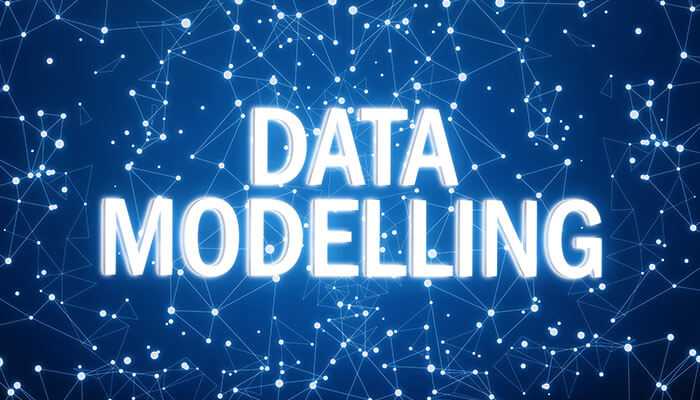In the vast expanse of computer programming, where complex algorithms reign supreme and data manipulation is the norm, lies a concept that serves as a cornerstone for many operations: cardinality. Cardinality is not just a mathematical term confined to the realms of set theory; it’s a fundamental concept in computer science, influencing how data is stored, queried, and processed within various data structures. In this article, we delve into the depths of cardinality in computer programming, unraveling its significance and exploring its practical applications.
Defining Cardinality
At its core, cardinality refers to the count of distinct elements in a set. In the context of computer programming, sets can manifest in various forms: arrays, lists, databases, or even collections of objects. Understanding the cardinality of these sets is crucial for optimizing memory usage, improving algorithm efficiency, and ensuring data integrity. Whether dealing with a small dataset or a massive database, grasping the cardinality enables programmers to make informed decisions regarding resource allocation and algorithm design.
Types of Cardinality
Cardinality can take on different forms, each with its own implications. Finite Cardinality pertains to sets with a limited number of elements, making it relatively straightforward to determine the count. Conversely, Infinite Cardinality presents a more intricate scenario, often encountered in streams of data or dynamically generated sequences. Additionally, Countable Cardinality characterizes sets that can be enumerated or put into a one-to-one correspondence with the natural numbers, while Uncountable Cardinality signifies sets that are too vast to be enumerated in such a manner, like the real numbers between 0 and 1.
Practical Applications
In real-world programming scenarios, cardinality plays a pivotal role in database management, where it influences schema design, query optimization, and index utilization. For instance, understanding the cardinality of attributes in a relational database aids in devising efficient join strategies and selecting appropriate indexing techniques. Moreover, in data analysis and machine learning tasks, cardinality guides feature selection and preprocessing steps, helping practitioners identify informative variables while mitigating the curse of dimensionality.
Challenges and Considerations
While cardinality provides valuable insights into the nature of data, it also poses challenges, particularly in scenarios involving high-dimensional datasets or streaming data sources. Balancing the trade-off between memory usage and computational complexity becomes paramount, necessitating the adoption of techniques such as dimensionality reduction or data summarization. Additionally, handling cardinality mismatches between datasets can lead to discrepancies in analytical results, underscoring the importance of data profiling and preprocessing techniques to harmonize disparate data sources.
Cardinality in Data Modeling
In the realm of data modeling, cardinality defines the relationships between entities, dictating how data entities are interconnected and how they can be queried. For instance, in a relational database schema, cardinality constraints specify whether a relationship between two tables is one-to-one, one-to-many, or many-to-many. Understanding these cardinality constraints is essential for designing normalized databases that minimize redundancy and maintain data integrity. By adhering to cardinality rules, programmers ensure that their database schemas accurately represent the underlying data relationships, facilitating efficient data retrieval and manipulation operations.
Cardinality in Data Structures
In the realm of data structures, cardinality influences the design and implementation of various data storage and retrieval mechanisms. For instance, in sets and maps, cardinality determines whether duplicate elements are allowed and affects the efficiency of operations such as searching and insertion. Similarly, in tree structures like binary search trees or balanced trees, cardinality considerations influence the balancing algorithms and traversal strategies employed to maintain optimal performance. By considering cardinality during the selection of data structures, programmers can tailor their solutions to specific use cases, striking a balance between memory efficiency and computational complexity.
Evolution of Cardinality in Big Data
In the era of big data, where the volume, velocity, and variety of data have reached unprecedented levels, cardinality assumes even greater significance. The emergence of distributed computing frameworks and NoSQL databases has led to new paradigms for handling massive datasets with diverse structures and dynamic cardinality. Techniques such as sharding, partitioning, and parallel processing are employed to manage the cardinality challenges inherent in distributed systems, enabling scalable and resilient data processing pipelines. As the data landscape continues to evolve, cardinality remains a guiding principle for architects and developers navigating the complexities of modern data ecosystems, ensuring that their solutions are robust, performant, and adaptable to the ever-changing demands of the digital age.
Final Thoughts
In the intricate tapestry of computer programming, where algorithms dance to the rhythm of data, cardinality stands as a guiding light, illuminating the path towards efficient and effective solutions. By understanding the count of distinct elements within sets, programmers can wield this knowledge to optimize performance, enhance scalability, and unlock the true potential of their applications. From database management to machine learning endeavors, the concept of cardinality permeates through various domains, shaping the way we perceive, process, and manipulate data in the digital age. Embracing cardinality not only empowers programmers with deeper insights into their data but also fosters innovation and drives progress in the ever-evolving landscape of computer science.



